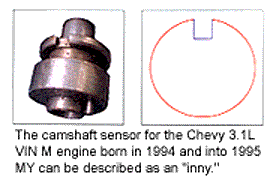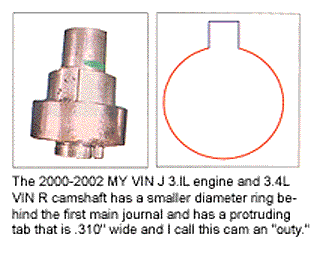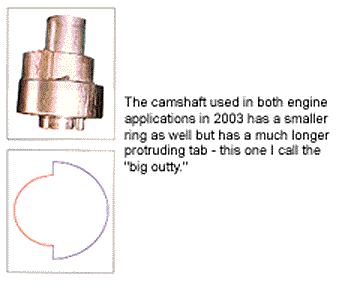Whenever I see a new subdivision being built further out into the rural areas of larger cities, I think about the new owners, many of whom will be young married couples moving out of apartments or condos and finally getting to that place where they are ready to start a family.
Once that baby booming starts there are always those typical conversations that all new parents have, one of which always comes up; does the baby have an “inny” or an “outty” for a belly button? Invariably there is always one Mom or Dad concerned about their child’s “big outty”and whether it is normal.

Okay, it’s a stretch, but that’s the only analogy I have found to describe camshaft identification for 3.1L and 3.4L OHV V6 Chevrolet engine camshafts from 1994 through 2003. And actually, it’s pretty darn accurate. It may sound silly but put the wrong one in the wrong application and you are going to have sensor problems that will give you runability issues and turn on that nasty “check engine” light. You’ll soon find out what’s “normal” and not.
In 1994 and into 1995 MY the Chevy 3.1L VIN M engine application used a roller lifter camshaft that was a tubular design with individual cam lobes swedged onto the tube. Just behind the first main journal of the cam is a ring that has a notch cut out of it for the camshaft position sensor now installed in the top front of the block right behind the timing cover. As you can see in the illustrations this is the one I call an “inny.”

This cam was p/n 10166337 and superceded to 24505674 and has 6337 or 3089 imprinted on the tube just before the first lobe.
1995 thru 1999 MY VIN M and J used p/n 24597450 with 5674 or 6178 imprinted on the barrel and is the same camshaft used for the 3.4L VIN E 1996 thru 1999 MY, both have the same configuration as that first cam with an “inny.”
2000 through 2002 MY VIN J 3.1L engine and 3.4L VIN E use camshaft p/n 24507450 with 7450 imprinted on the barrel however, this camshaft has a smaller diameter ring behind the first main journal and has a protruding tab that is .310″ wide and I call this cam an “outty.”

Then in 2003 both engine applications keep the same VIN numbers but there is a new camshaft part number 12567117 and the barrel has number 7117 imprinted on it. This cam has a smaller ring as well but has a much longer protruding tab and this one I call the “big outty.” By the way if you have not picked up on it yet the last four digits of the part number are the ones imprinted on the barrel of the camshaft. This rule can be applied to nearly all GM camshafts for future reference.
I hope this helps avoid any “do overs” in your rebuilding and remanufacturing of these two engine applications. I also want to remind you that the 2004 PERA Engine Application and Identification Catalog is now available. For further information contact PERA at 703-968-2772 or go to the web site www.pera.org and click on Products/Catalogs, or email to [email protected].













